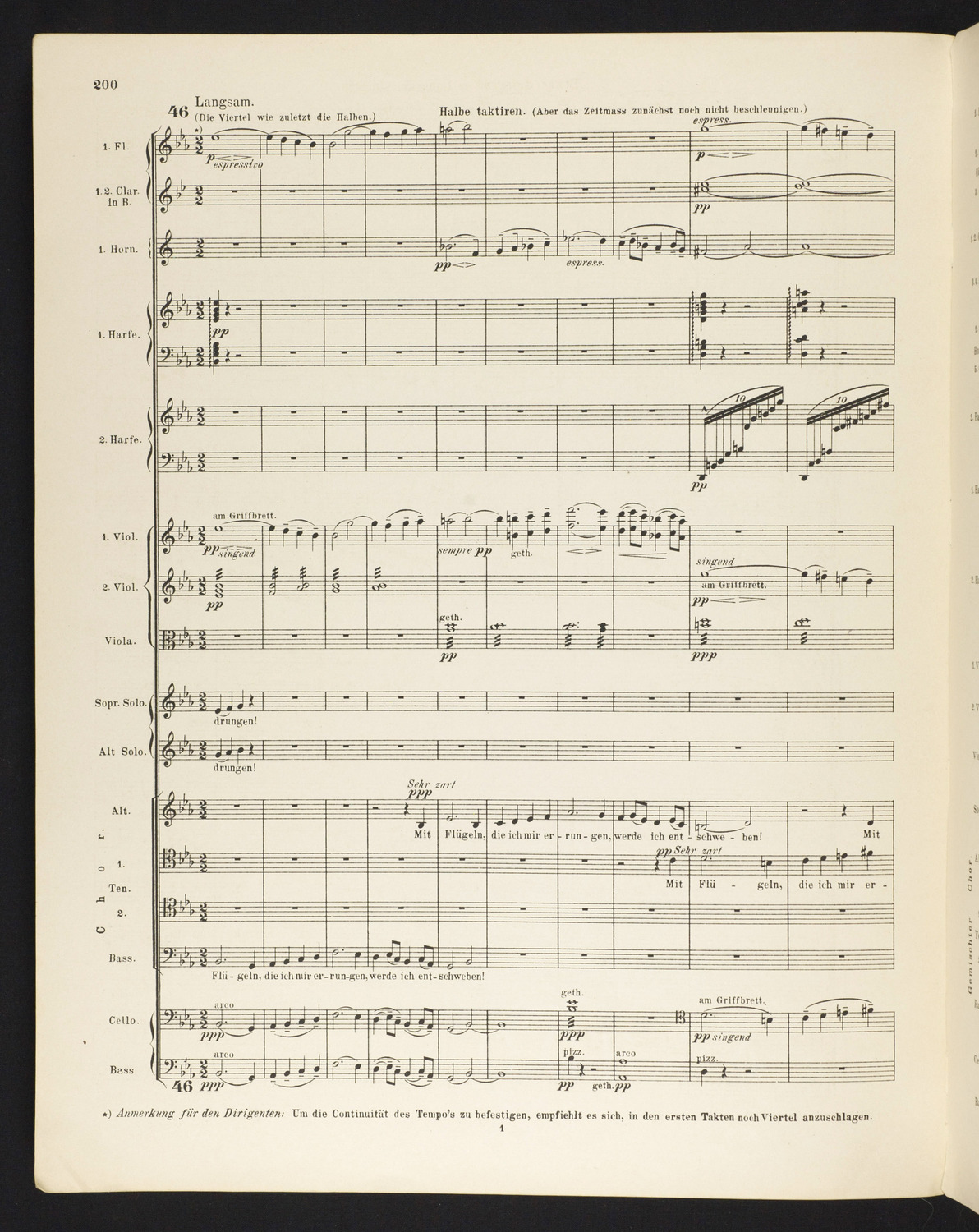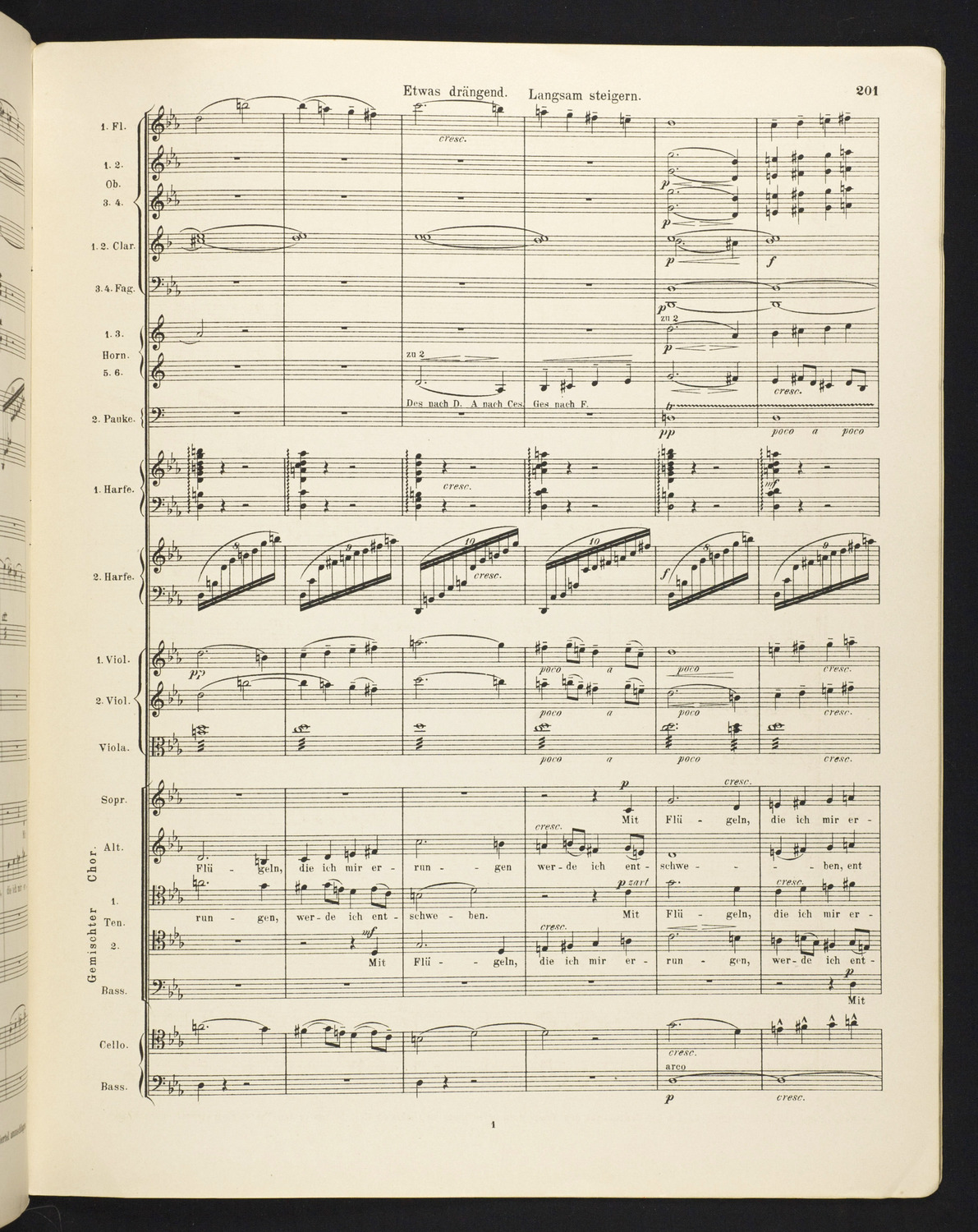Gustav Mahler—Resurrection Symphony

Gustav Mahler. Symphony No. 2, “Resurrection.” Leipzig: Commissionsverlag von Friedrich Hofmeister, ca. 1895. pp. 200-201.

Lilly Library M1001 .M214 No.2
Mahler’s second symphony premiered in 1895. The work, for huge orchestra and chorus, follows a narrative from death to life, beginning with a funeral march and ending with the triumph of resurrection. Mahler was not necessarily endorsing the Christian doctrine of eternal salvation from sin with the “Resurrection” Symphony. Rather, he sought to provide hope and meaning for humanity’s suffering.
Similar biblical influences surface in the finale to Mahler’s symphony as in the Verdi and Brahms Requiems. Mahler, like the other two composers, features a trumpet call representing finality. In the “Resurrection” Symphony, directly after this statement, the choir enters at a hushed, solemn moment and proceeds to sing a hymn of redemption and resurrection (text by Klopstock and Mahler), leading to a powerful, victorious conclusion. The excerpt to the right is from the finale's concluding section, where a continual sense of ascending is prominent in the music. The score, from the Lilly Library’s collection, is a first edition, published in 1895.
